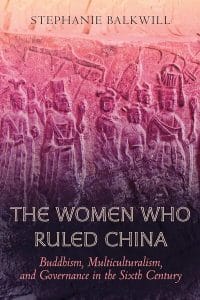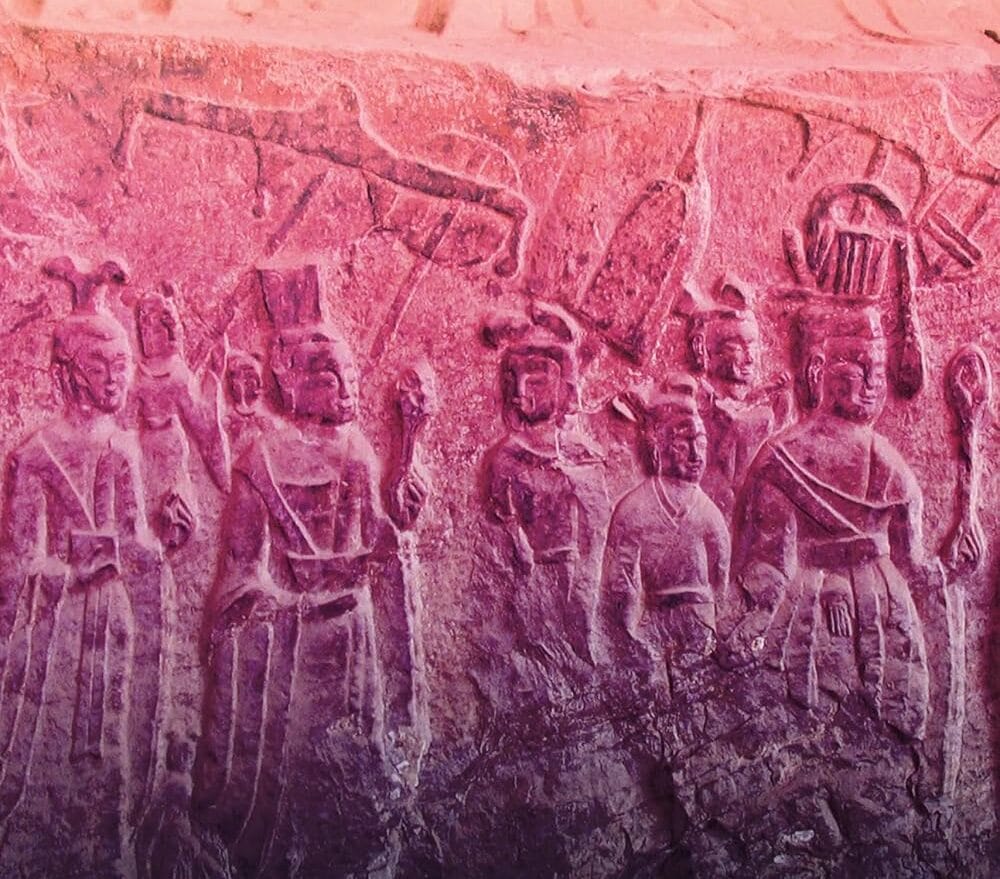The Northern Wei (386-534) are having a moment. Heritage projects, including large-scale digitization efforts, have brought renewed attention to Northern Wei sites of Buddhist statuary, including the Yungang and Longmen grottoes. The live-action Mulan movie thrust the iconic “Chinese” heroine, believed to originate in the multicultural milieux of the Northern Wei, back into the global spotlight. Ethnic tensions in China have heightened interest in the historical relations between Han and non-Han peoples, including the Taghbach, the Inner Asian people who founded the Northern Wei Dynasty.
In this moment, Stephanie Balkwill’s The Women Who Ruled China: Buddhism, Multiculturalism, and Governance in the Sixth Century, illuminates the life and times of the little-known Empress Dowager Ling, one of the final rulers of the Northern Wei. The Empress Dowager’s rulership as a Buddhist woman preceded analogous cases, including those of Tang Dynasty empress-turned emperor Wu Zhao (624-705), Queen Seondeok (ruled 632-47) in Korea, and Empress Kōken/Shōtoku (ruled 749-58 and 764-70) in Japan. Balkwill, a scholar of religion, uses Buddhist sources, including mortuary inscriptions, donor records, and colophons on sutra, to place Empress Dowager Ling in her dynamic, cosmopolitan social context. For too long, Balkwill argues, the sixth century has been marginalized in the historiography of China as an age notable mainly for its political divisions. Balkwill has a different story to tell about early medieval China. “This is the story of the emergence of public and political roles for women brought about through the arrival of Buddhism to East Asia, the advent of multiethnic states and multicultural cities, and the reinvention of cultural and political traditions that came about as a result.”

Balkwill’s introduction calls for a Buddhist feminist methodology to redress the biases of a Confucian historiography that privileged men over women and the Han Chinese over non-Han peoples. Following a first chapter that sets the stage with a study of the capital city of Luoyang, the second chapter addresses the biased historiography head on through a critical translation and analysis of the Empress Dowager’s biography in the Book of the Wei. Chapters three through five form the heart of the book as they work through a sometimes-dizzying array of sources and sub-claims to provide a more satisfying account of the empress’s life and its significance.
Despite its title, the book does not simply shift attention from great men to great women. It is a social history with a focus on women and gender. Some of the most interesting claims are based on a close, but broadly contextualized, analysis of titles and names. The aunt of Empress Dowager Ling, a Buddhist nun named Sengzhi, was a powerful woman at court. Holding the position of “superintendent of nuns” and honored as “dharma master”, she created female networks of empowered women with administrative functions. Beyond the court, women contributed funds to Buddhist building projects, leaving a record of donors identified as wives of named individuals but with male-gendered names. Balkwill places these names in the context of honorary or social maleness, a facet of Taghbach culture. Under certain social conditions, perhaps including the famed case of Mulan, a person’s gendered behavior became untethered from biological sex. Perhaps this tradition of honorary maleness helps explain one of the most notorious actions of Empress Dowager Ling’s regency: her decision to place her granddaughter on the throne after killing her co-ruler and son.
Wait … she killed her son? That’s hardly a surprise. She also usurped power, had debauched sex, mismanaged finances, hastened the end of her dynasty, and provoked the displeasure of heaven by violating the admonition “hens should not announce the dawn.” Of course, all of this is from the perspective of Confucian court men of the subsequent dynasty. The tropes are indeed so tired they hardly need recounting. Unfortunately, Balkwill devotes too much time to her critical reading of Empress Dowager Ling’s official biography. I wish the book would have started with chapter three, decentering the translated biography by placing it in an appendix. Convinced of the value of Balkwill’s Buddhist feminist methodology, I want it front and center in her book.
The Women Who Ruled China is available open access on the website of the University of California Press and it is well worth a read. The introduction and conclusion are short and accessible and the body chapters, particularly three through five, are bursting with ideas and grounded in impressive research.


You must be logged in to post a comment.